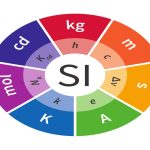As an engineer you must be able to handle all kinds of units and be able to convert a given set of units to another with ease. As you probably already know, the procedure for converting one set of units to another is simply to multiply any number and its associated units by ratios termed conversion factors to arrive at the desired answer with its associated units. Conversion factors are statements of equivalent values of different units in the form of ratios. Note that because conversion factors are composed of equivalents between units, multiplying a quantity by one or more conversion factors does not actually change the basic quantity, only its numerical value and its units. Table 2.4 demonstrates how several equivalents between units can be converted into ratios that are deemed conversion factors.

On the inside of the front cover of this book you will find tables listing commonly used conversion factors. To obtain unit conversion factors from these tables, use the following procedure: (1) Locate the name of the current unit in the row on the left-hand side of the table. (2) Locate the name of the desired unit in the column at the top of the table. (3) The number in the box that is at the intersection of the row and column of the table is the value of the conversion factor, that is, is equal to the value of the current unit divided by the desired unit. For example, look at the first table on the inside cover: “Volume Equivalents.” To find the conversion factor to convert U.S. gallons to liters (L), locate “liters” on the top row and “U.S. gal” in the left column.
At the intersection of these two units is a box that contains the number 3.785, which means that the conversion factor is U.S. gal/L = 3.785. What is the conversion factor to convert liters to U.S. gallons? Is the numerical value of 0.2642 correct? You will find engineering handbooks as well as certain Web sites to be good sources of tables of conversion factors. We recommend that you memorize a few of the most common conversion factors to avoid looking them up in tables. In this book, to help you follow the calculations and emphasize the use of units, we frequently make use of a special format in the calculations, as shown below, as a substitute for parentheses, times signs, and so on.



